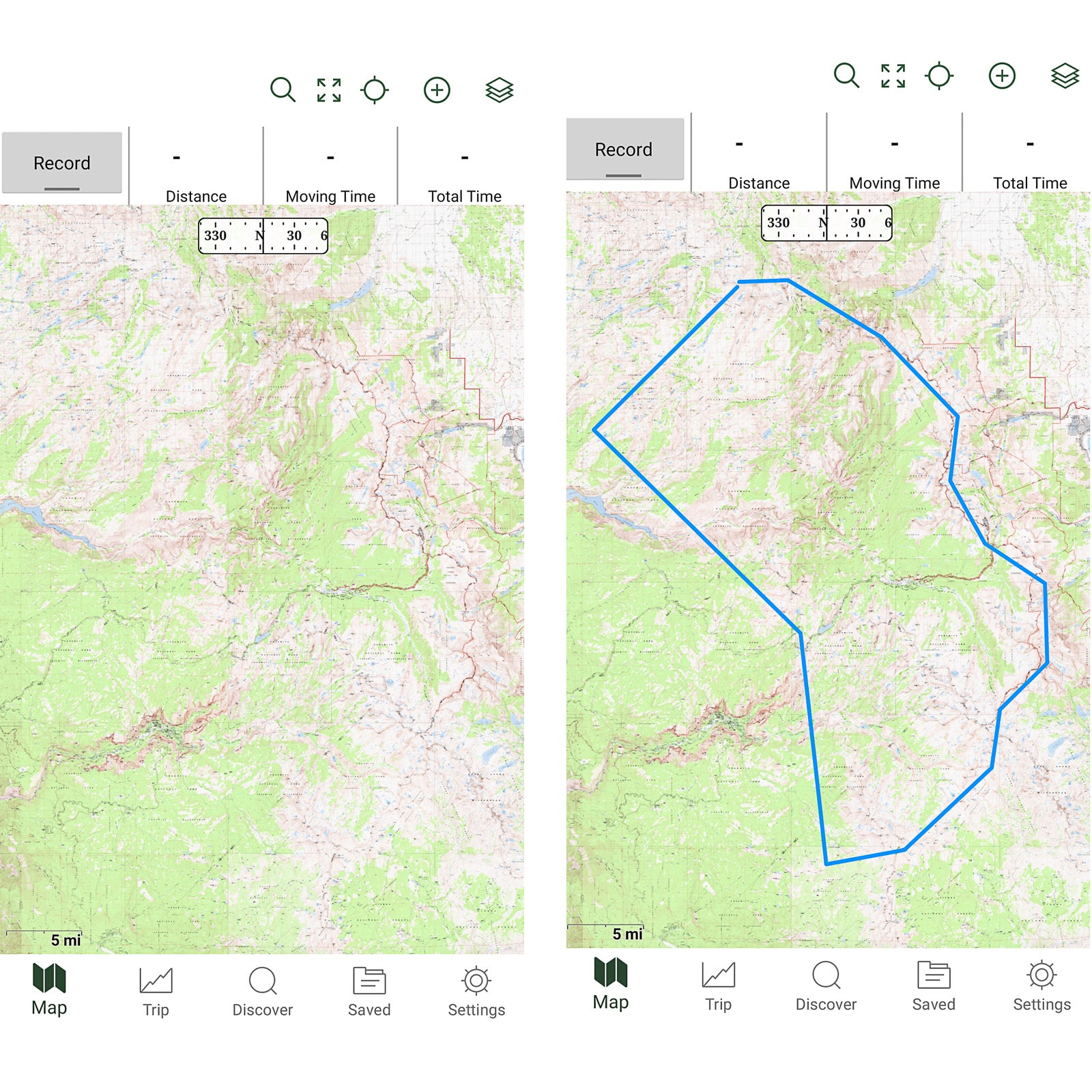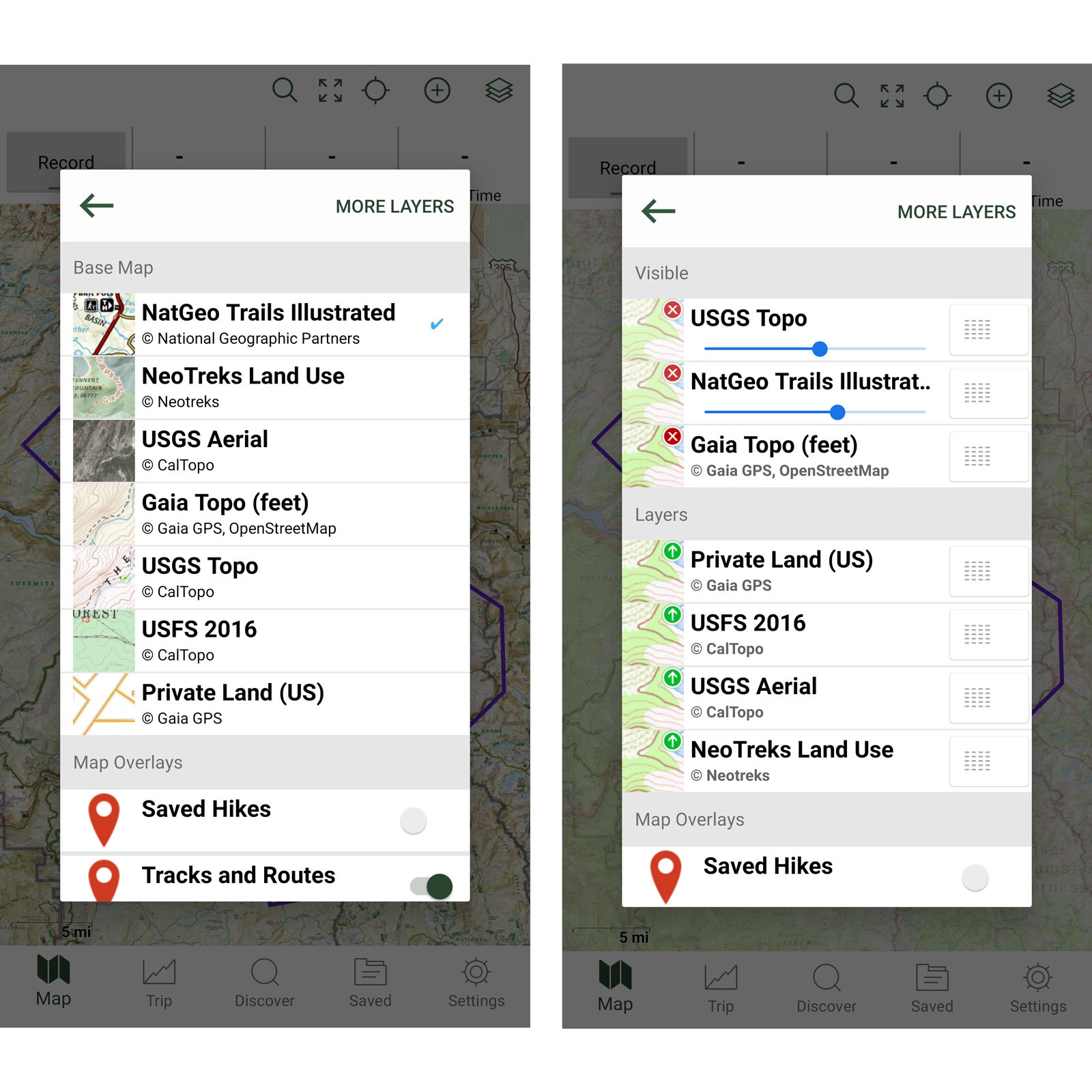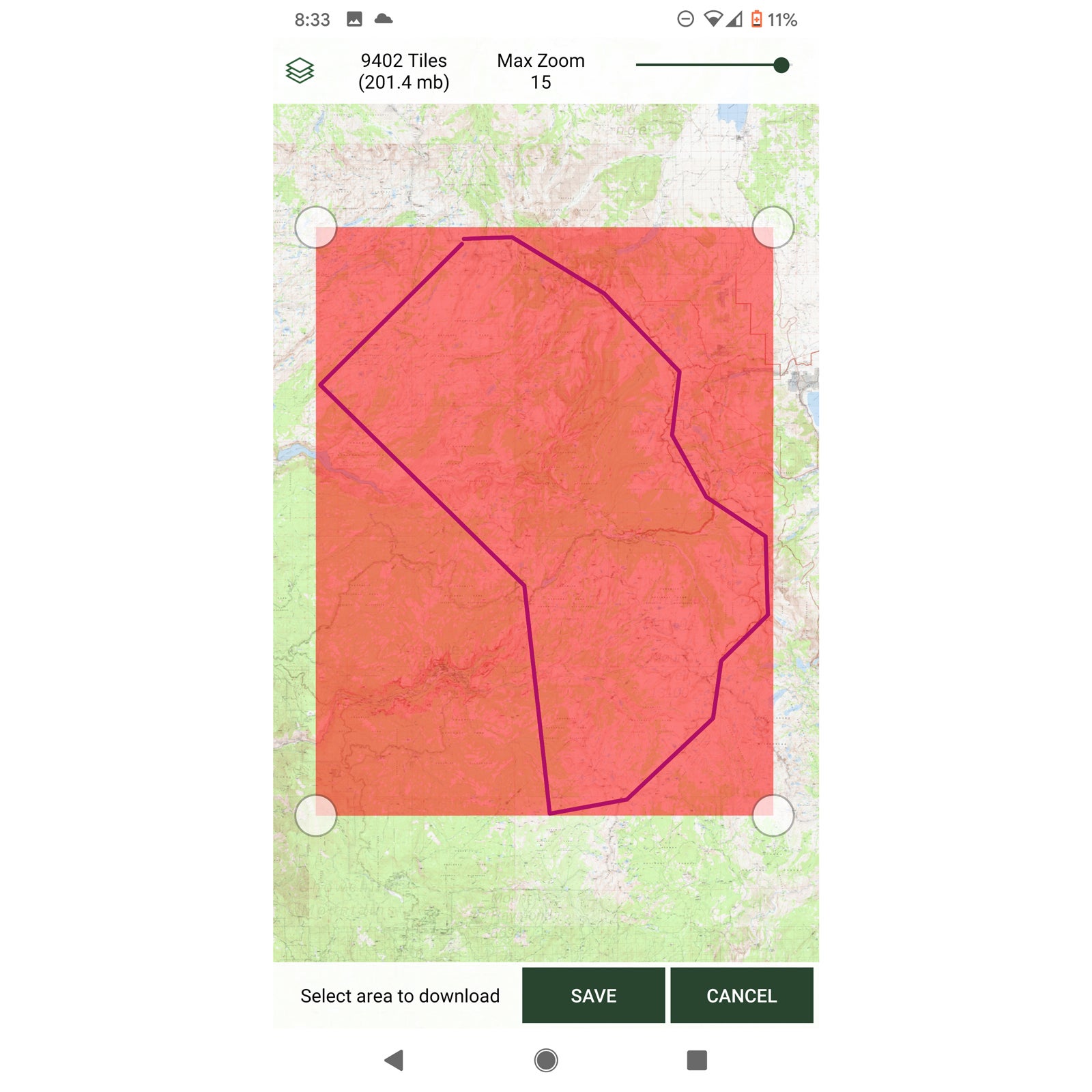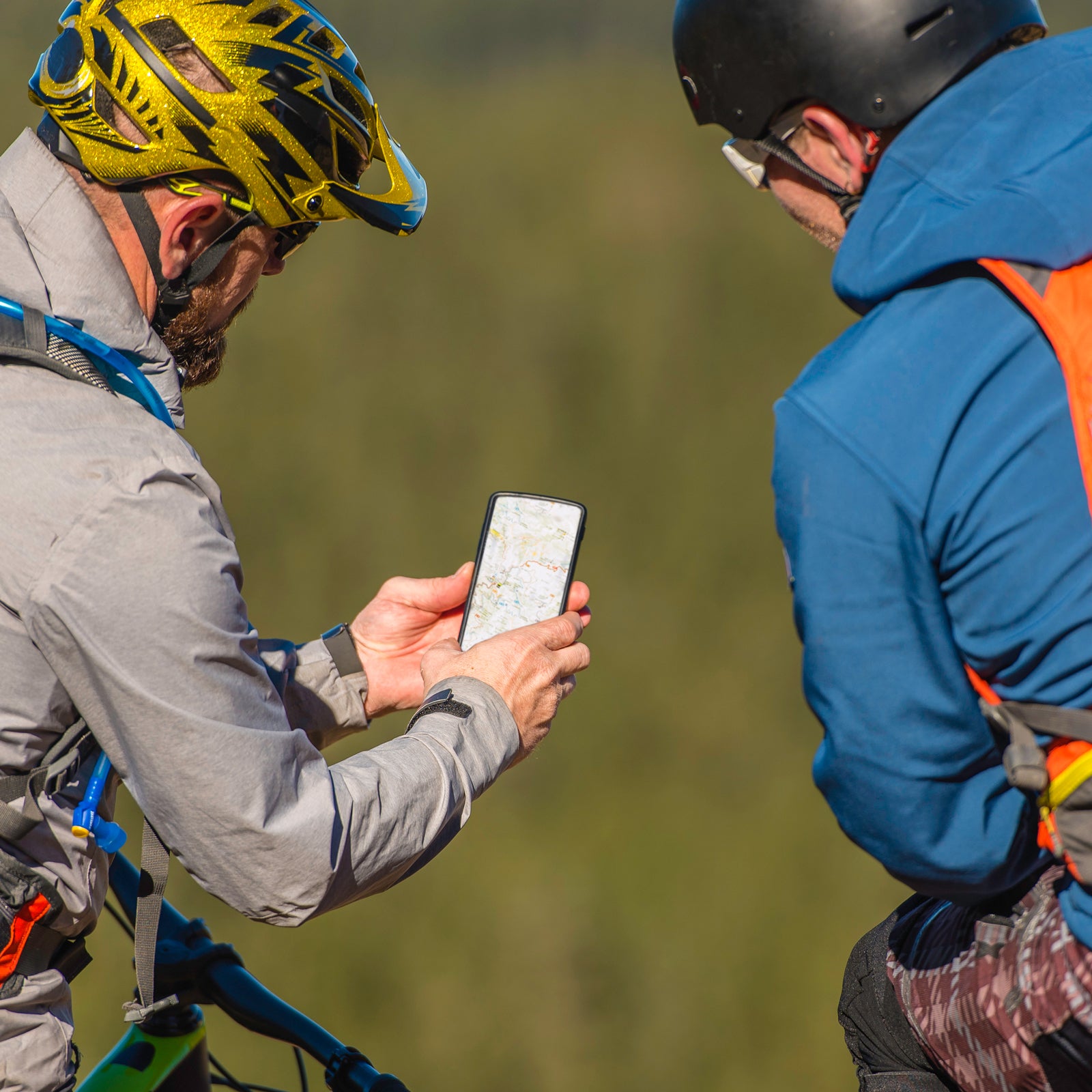On most trips and in most locations, to navigate I rely primarily on my paper topographic maps, ABC (altimeter, barometer, compass) or GPS watch, and╠řmagnetic compass. As both a backup and supplement to these tools, my smartphone has a GPS app like (good) or (better), which I use to access downloaded map data for offline use.
A GPS smartphone app has two purposes:
- It acts as a map library, in case your printed documents are damaged or lost╠řor if you unexpectedly hike off course.
- It has the same functionality youÔÇÖd expect of a traditional handheld GPSÔÇölike pinpointing its location╠řand navigating to waypointsÔÇöbut is lighter, less expensive, and more user-friendly.
Collectively, these four instruments constitute my navigation system. Some hikers may consider my preferences old-fashioned, since itÔÇÖs increasingly common to navigate exclusively or primarily with GPS. But I value the reliability and efficiency of these more analog methods, and I appreciate the art of using them. To hone that art, I recommend downloading╠řmaps in Gaia GPS for offline use. This will preserve the appÔÇÖs functionality, even in the backcountry without reliable cell service.
This tutorial is╠řbased on an assignment╠řI give to my guided clients, who participate in an eight-part planning curriculum that prepares them for their trip and can be retooled easily for their own personal trips. IÔÇÖve decided to share it╠řpublicly, since so many people are under stay-at-home orders and so many spring backpacking trips have been canceled or postponed.
Get Started
First, download the Gaia GPS app.
╠ř
To complete this assignment, you must have a regular╠řor premium membership, which cost $20 and╠ř$36╠řper year, respectively. Gaia has a free account, too, but it does not allow for offline use. So that you can complete this assignment (and maybe test out the app in the field), Gaia is offering a . (This╠řfree trial╠řdoes not require a credit card. If you wish to renew later, youÔÇÖll need to enter one. At that time, take advantage of .)
Avoid doing this assignment at the last minute. If Gaia is new to you, give yourself about 15 to 30 minutes to complete it. To download map data, youÔÇÖll need a reliable internet connection with a high data-use limit, which means Wi-Fi╠řin most cases. DonÔÇÖt count on rural mobile data service or an overtaxed motel connection.
Download an Area
Determine the area you want offline maps for. Make sure it encompasses╠řyour entire route, plus all prospective shortcuts and extensions. For a point-to-point itinerary, this zone will probably be long and narrow; for a loop, itÔÇÖll probably be more square.
If you must download a large area, itÔÇÖs useful to have a ÔÇťreference box,ÔÇŁ╠řbecause as you zoom out, it becomes difficult to identify topographic features on a five-╠řor six-inch smartphone screen. With a box that remains obvious at all magnification levels, you can be assured that you are downloading the intended area. This box can be created in the app╠řby adding waypoints or routes to the map╠řvia the plus (+)╠řbutton. On the Gaia desktop site, you can also add╠řwaypoints or routes to a map via the left-side toolbar, which then syncs to your smartphone.

IÔÇÖve created some download boxes for my guided trips that you can use for practice:
- In your smartphone browser, open this .
- In the top menu, select the wrench icon, and then Export GPX.
- In the 2020 Trip╠řfolder, select one trip. Deselect all other exportable data.
- Press Export╠řto download a GPX file.
You can complete these steps from a desktop computer, too, in two ways:
- Download the GPX to your desktop, email yourself the file, and download it to your phone.
- Download the GPX to your desktop, upload it to your account at the Gaia GPS website, then sync your phone.
Alternatively, you can download an area thatÔÇÖs more relevant to you. For extra practice, you can create your own download box in Gaia beforehand.
Now╠řload this GPX file into Gaia GPS. You have two options:
- In the app, select the plus╠řbutton in the top menu, then Import File.╠řFind the GPX file on the phone, and select it.
- Use a file-system app (e.g., Files╠řon Android) to find the GPX file, then open the file in Gaia GPS.
If you donÔÇÖt see the track from the GPX file, click on the layers icon in the upper right and confirm that Tracks and Routes╠řis turned on, then╠řmake sure your trip location is visible on your screen.
Select the Download Layer
With a basic membership, only one map layer╠řcan be downloaded at a time. With a premium membership, multiple layers can be downloaded simultaneously. However, the opacity settings at the time of download will be frozen. If you want to use the layers independently, they must be downloaded separately.
Touch the upper-right layers icon, and select the desired layer(s) to download. You may need to dig into the map library for your desired mapsÔÇölook under More╠řLayers.

You may also want to download the╠řGaia topo layer, which will load more quickly than USGS╠řand Forest Service topo layers, because itÔÇÖs vector based, not raster. Or download the╠řTrails Illustrated layer, handy for╠řsmall-scale overview maps. It may make sense to download other maps╠řinstead of or in addition to those IÔÇÖve already mentioned. For example, before elk hunting in Colorado, I download the GMU╠ř(game management units) and public-access layers, so that I remain on legal hunting grounds, plus USGS aerial satellite imagery, so that I could find clearings more easily.
Download the Maps
Finally, letÔÇÖs download some maps.
Select the plus╠řbutton from the top menu,╠řthen Download Map.╠řA red-shaded box will appear. Move it and its corners to encompass your guide box or the map area you want to download.
If youÔÇÖre╠řlow on storage space, you can reduce the zoom level. If not, keep it at level 12╠řfor maximum resolution.
Hit the Save╠řbutton, and name the map.

Check Your Work
To confirm that your maps have downloaded successfully:
- In the bottom menu, select the folder icon (Saved).
- Pull up your saved maps. Look under All╠řor Maps╠řin the top menu, between Saved╠řand the triple-dot icon.
- Gaia should push out a notification that your map download is complete.


